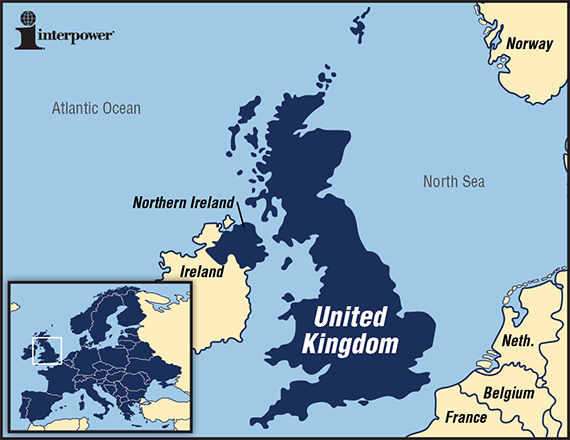Exporting to the United Kingdom

| UNITED KINGDOM | |
|---|---|
| Actual population* | Population world ranking |
| 63,742,977 | 23 |
| Actual GDP (PPP)* | GDP world ranking |
| $2.387 trillion | 9 |
| Actual GDP (per capita)* | GDP (per capita) world ranking |
| $37,300 | 34 |
*See the end of this blog for definitions
As one of the largest international markets, the United Kingdom offers many trade opportunities. As a member of the European Union, the UK is often considered as one of the gateways to other EU markets.
Market entry strategies include evaluating potential business associates and choosing a reputable local distributor who will provide a positive image of the company. A long-term commitment is strongly encouraged as is being flexible with market changes. It’s important to realize cultural differences and adapt accordingly.
Knowing the business culture will help to enhance the success of a company doing business in the UK. It’s advised to have personal contact with business associates. Timely recognition of correspondence, being on time for appointments, and formal business relations are also part of this business climate.
There are a number of resources to consult for guidance to enter the market, business customs, and import/export requirements. These include the United Kingdom Trade and Investment and the United States Commercial Service.
Located in Northern Europe, the United Kingdom joined the European Union in 1973. The EU is a Customs Union which consists of member countries who have formed a single region for customs purposes. Goods that have been imported legally can circulate throughout the EU with no further customs checks. To learn more about the customs regulations, among the sources to consult are the European Commission Export Helpdesk and European Commission Taxation and Customs Union. Conducting due diligence in accordance with all of the regulations is essential.
Some products may require safety testing and certification for this market. While not all products are required to have a CE mark, others do require one. When affixing the CE mark to a product, a manufacturer affirms that the product meets the necessary requirements and can be sold throughout the EU.
There are also EU regulations that need to be followed, so it’s important to know what is required in the United Kingdom. Among them are:
- REACH is the European regulation for Registration, Evaluation, Authorization, and Restriction of Chemicals. The European Commission works closely with ECHA (European Chemicals Agency) in the implementation of this regulation.
- RoHS stands for Restriction of Hazardous Substances. It restricts the use of certain hazardous materials found in electrical and electronic products.
- WEEE stands for Waste from Electrical and Electronic Equipment. WEEE requires the treatment, recovery, and recycling of electric and electronic equipment.
While English is the official language, there are a number of communities in the UK whose primary language is not English. For example, Welsh is spoken by some in Wales and Gaelic is spoken by some in Scotland. Within London, there is also a variety of languages spoken.
In the United Kingdom, the voltage used is 230V at 50Hz. The most frequently specified plug pattern is the United Kingdom plug.
Sources:
www.gov.uk
www.export.gov/unitedkingdom
Sources for European Union:
www.ec.europa.eu
www.echa.europa.eu
www.rohsguide.com
www.exporthelp.europa.eu
www.europa.eu
www.export.gov/europeanunion
*Source: www.cia.gov/library/publications/the-world-factbook/index.html
Country comparison—Population: Population compares estimates from the US Bureau of Census based on statistics from population censuses, vital statistics, registration systems, or sample surveys pertaining to the recent past and on assumptions about future trends. (July 2014 est.)
Country comparison—GDP (Purchasing Power Parity): GDP (purchasing power parity [PPP]) compares the gross domestic product (GDP) or value of all final goods and services produced within a nation in a given year. A nation’s GDP at PPP exchange rates is the sum value of all goods and services produced in the country valued at prices prevailing in the United States. (2013 est.)
Country comparison—GDP – per capita (PPP): GDP – per capita (PPP) compares GDP on a purchasing parity basis divided by population as of 1 July for the same year. (2013 est.)






